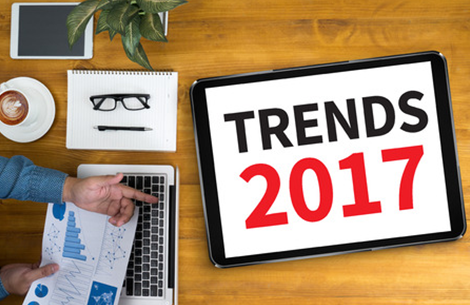Just like 2016, 2017 brings new and innovative ways to present your resume, as well as tactics to utilize the information captured during the resume building process. In some cases the 2016 Trends are still very prevalent and still need to be incorporated into designing and writing a new executive resume document.
In addition to an eye-catching design layout, achievement-driven bullets and strong word choice to define your brand, as demonstrated in these executive resume samples, these 9 executive resume trends will help you ensure you are ahead of the competition and viewed as a leader in your field.
2017 EXECUTIVE RESUME TREND #1: Make the most of your Prime Resume Real Estate.
The top third of your resume is Prime Resume Real Estate. Create a robust Summary to capture the hiring managers eye. Use this space wisely to include what position you are targeting and a few pointed achievements that support why a hiring manager should call you for an interview for that targeted position. Don’t use the space to state the obvious with a “summary” title or fluffy attribute descriptions.
2017 EXECUTIVE RESUME TREND #2: Write Tight.
Once you write your resume, challenge yourself to identify words to delete from your content. Write concisely. Doing so will help create white space and make the reader’s eye flow over your resume with ease leading to an interview call.
2017 EXECUTIVE RESUME TREND #3: Customize for the audience–not only the position.
Sending a resume to a third party recruiter, you need to motivate them to want to send you to their client. Whereas, when sending your resume directly to a hiring manager, you need to address how you will create results for them and make their life more productive in hiring you. Factor this perspective in when sending your resume to a corporate recruiter or through an employee referral. Ask yourself, “What is their motivation to take the next step with your resume?” and address that point.
2017 EXECUTIVE RESUME TREND #4: Make it easy for readers to digest your information.
White space, white space, white space…Cramming content in multiple, information-dense, multi-lined paragraphs with little white space around each one is enough to make a reader go, “Next!”
When recruiters see these types of documents, they don’t want to read them. Make it easy for your readers to find information using bullets, sectioned off information blocks and simple graphics to move the eye through the document.
2017 EXECUTIVE RESUME TREND #5: Lead with your achievements early.
Put your best foot forward leading with your accomplishments early in the summary and in the employment sections. Gone are the days where there was a long summary or no summary. In today’s employment marketplace with shrinking attention spans, an executive must lead with a strong first impression. The Summary should contain their crowning, most relevant achievements. This will keep the reader engaged in 5-10 second increments and motivate them to keep reading.
2017 EXECUTIVE RESUME TREND #6: Treat your resume as your personal marketing collateral.
Just as you would have a business card or your biography on a company webpage, your executive resume is an extension of your personal brand. Your executive resume is your personal marketing collateral.
2017 EXECUTIVE RESUME TREND #7: Speak to benefits, not just your experience.
Do not lead with years of experience if you want to be hired on merit. For example, “I have reduced operating expenses by 23% in six months” is much more interesting to an employer versus, “I have 30 years of sales experience.” The latter elicits a yawn, but the former piques one’s interest and leaves the person wanting to see where else you’ve made a tangible impact.
2017 EXECUTIVE RESUME TREND #8: Alignment with content your online and mobile profiles.
An executive resume does not exist in a vacuum anymore. It’s not the only way someone can find you – nor should it be. Ensuring your resume is in alignment with your branded.me page, LinkedIn profile, twitter account, blog, and other social media pages that are pertinent to your field is paramount. A hiring manager may find your work on your personal blog, but when they reach out to ask for your credentials and you send your resume, you want to make sure your online presence is in alignment with your offline/resume presence. Consistency is important. Authenticity is everything.
2017 EXECUTIVE RESUME TREND #9: Use the resume creation process for other documents.
Don’t use the resume creation process to only create a resume. Use these accomplishment-gathering process and personal branding development exercises to create executive bios, 1-page networking resumes, infographics, social media bios, etc. Those that say the resume is dead are wrong. The resume might not be used in every situation every time, but the process with which you create your resume will support the creation of traditional and contemporary documents that are being requested at the executive-level job search with increasing frequency.
Not Authorized
You are currently not authorized to access this section.
Please contact your Administrator to change your authorization settings.
Please contact your Administrator to change your authorization settings.


